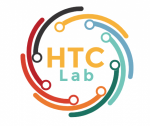Historically, proficient writing was deemed essential for human advancement, with creative expression viewed as one of the hallmarks of human achievement. However, recent advances in generative AI have marked an inflection point in this narrative, including for scientific writing. This article provides a comprehensive analysis of the capabilities and limitations of six AI chatbots in scholarly writing in the humanities and archaeology. The methodology was based on tagging AI generated content for quantitative accuracy and qualitative precision by human experts. Quantitative accuracy assessed the factual correctness, while qualitative precision gauged the scientific contribution. While the AI chatbots, especially ChatGPT-4, demonstrated proficiency in recombining existing knowledge, they failed in generating original scientific content. As a side note, our results also suggest that with ChatGPT-4 the size of the LLMs has plateaued. Furthermore, the paper underscores the intricate and recursive nature of human research. This process of transforming raw data into refined knowledge is computationally irreducible, which highlights the challenges AI chatbots face in emulating human originality in scientific writing. In conclusion, while large language models have revolutionised content generation, their ability to produce original scientific contributions in the humanities remains limited. We expect that this will change in the near future with the evolution of current LLM-based AI chatbots towards LLM-powered software.
Latest posts by Ryan Watkins (see all)
